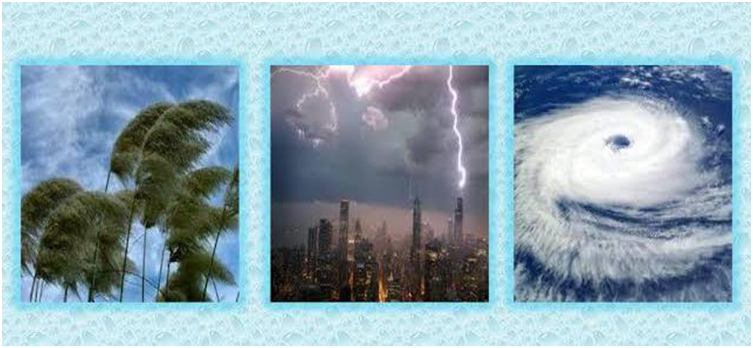- Books Name
- CBSE Class 7 Science Book
- Publication
- Param Publication
- Course
- CBSE Class 7
- Subject
- Science
INTRODUCTION :
When a place gets heated by the sun, the air above it also gets heated, when air is heated, it expands and becomes lighter.
The warmer, lighter air rises and cooler, denser air blows in from the neighbouring areas. The movement of air is what we call wind. When air moves gently (low speed). it is called a breeze.
When it moves violently (high speed), it is called a storm. Storms are classified in many ways and given different names. But they have one thing in common-high-speed winds.
Air pressure :
The air surrounding the earth exerts a pressure on its surface. Like temperature and humidity, air pressure also determines the weather of a place on any particular day. It is measured by an instrument called a barometer and it determines whether a day is going to be calm or stormy.
There is a close link between (air) pressure and wind. We can say that winds blow from regions of high pressure to regions of low pressure.
The greater the difference in pressure, the greater is the speed of the wind.
Note :
(i) High speed wind is accompanied by a reduced air pressure.
(ii) The instrument used to measure atomspheric pressure is called as barometre.
Chapter 8: Winds, Storms and Cyclones

The air tends to rise and causes a drop in pressure. More air rushes to the centre of the storm. This cycle is repeated. The chain of events ends with the formation of a very low-pressure system with very high-speed winds revolving around it. It is this weather condition that we call a cyclone.
Air exerts pressure

Air is made up of molecules of different gases. The molecules are colliding with each other continuously with the walls of the container. When a molecule collides with the wall, they exert small force on the wall The pressure exerted by the gas is due to the sum of all these collision forces.

 Param Publication
Param Publication
 Grow Career Publication
Grow Career Publication
